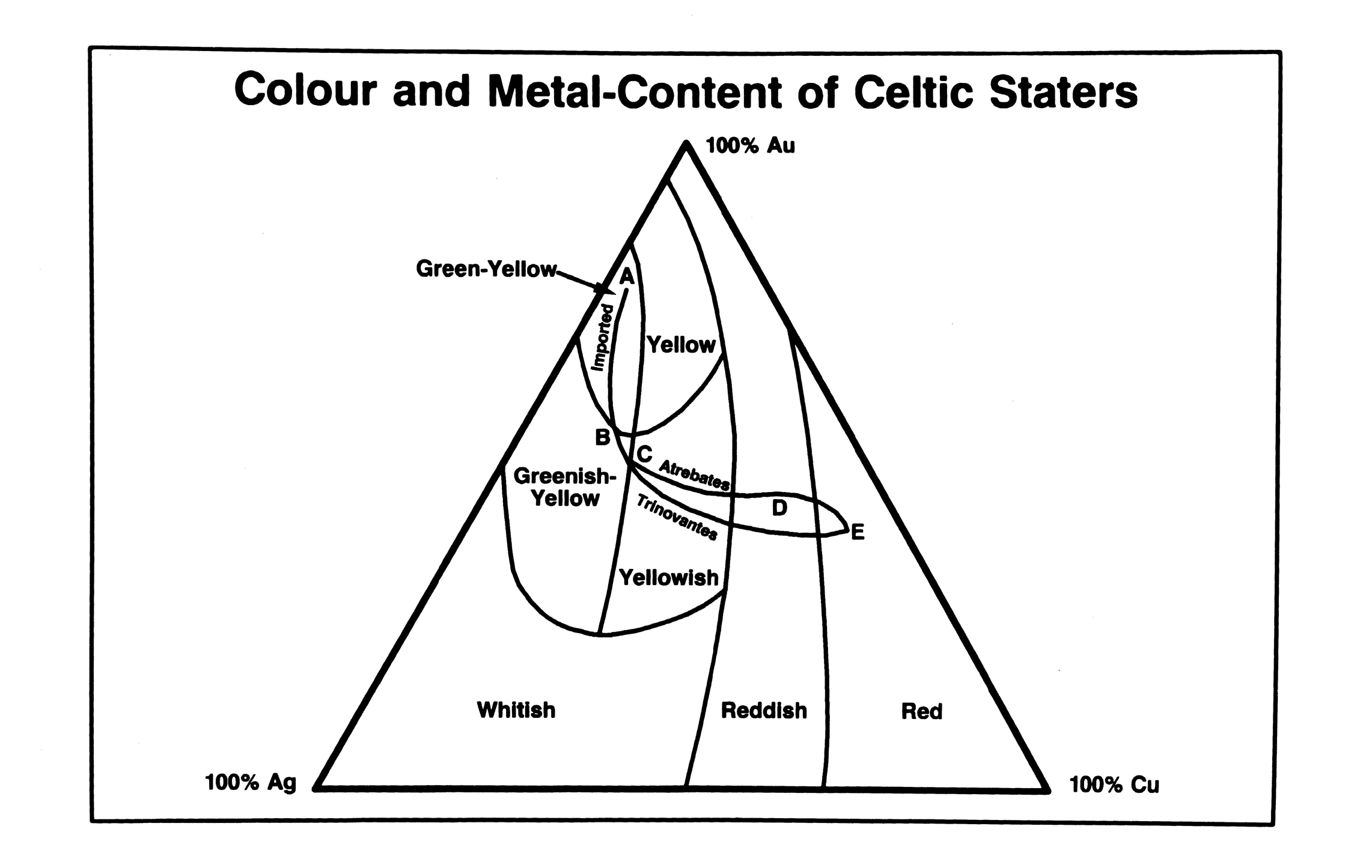
About the Coins
Manufacturing Methods (Info)
Colour and Metal Content of Celtic Staters
The Celts removed half the gold from their staters, bit-by-bit, over a hundred year period. They concealed the fact, however, by cleverly adjusting the other metals in the alloy to keep the colour nearly constant.
British staters are made of a three-way alloy of gold, silver and copper. The earliest coins are made of an alloy close to that of naturally-occurring gold with a bit of copper. These are plotted at "A" and have a colour described as Green-Yellow. The moneyers replaced the gold mostly with silver for the first five, years, because this kept the colour in the Green-Yellow region. If they had added copper, instead, the coins would have gone into the Yellow or Reddish sectors and the difference might have been noticed.
By the early years of the Gallic War (point "B"), the moneyers were forced to reduce the gold content drastically. Unfortunately, further additions of silver at this point drive the colour into the Greenish-Yellow sector. The moneyers were faced with a decision. They could produce coins that would soon look too pale (by adding more silver), or they could add copper and allow them to become yellowish instead. Evidently, yellowish was more acceptable, so copper-additions were chosen. Thus, the colour-trend skirts the Greenish-Yellow sector during the Gallic War, and enters the Yellowish, about 50 B.C., at point "C".
About this time, two things occurred: Gaulish gold staters stopped coming to Britain and many British tribes began to strike silver coins. The moneyers now had to economize on both gold and silver. They switched from simply adding copper to the alloy, to extracting silver, as well.
For a few years, the coins stayed in the Yellowish sector. But by 30 B.C., at point "D", they had entered the Reddish zone. The transition from yellowish to reddish happened reasonably quickly, and this would have been one of the few times the colour change would have been detected by the people. The transition from the Reddish sector into the Red would have been less objectionable – the coins were already red-tinged. By 20 A.D., at point "E", the coins had developed the well-known red colour.
Next Section – Cast Coinages
